Porter Cable 14″ Bandsaw Review
- May 17, 2024
- 0 comment
Hey folks, I recently added the Porter Cable 14-inch bandsaw to my workshop, and after a thorough test run, I’m ready to share my experience with this tool. Whether you’re considering the benchtop or the floor-standing version like mine, here’s what you need to know.
Specifications of Porter Cable 14″ Bandsaw
- Motor: 1.5 HP, 10 amps, dual-speed
- Table Size: 16″ x 16″
- Cutting Capacity: 6″ depth, 13.62″ throat
- Blade Size: 93.5″ length, 0.25″ width
- Dust Port: 2.5″ diameter
- Dimensions: 26″ (L) x 16.5″ (W) x 67″ (H)
- Weight: 191 lbs
- Table Tilt: 0-45° right tilt
- Warranty: 3 years
First Impressions
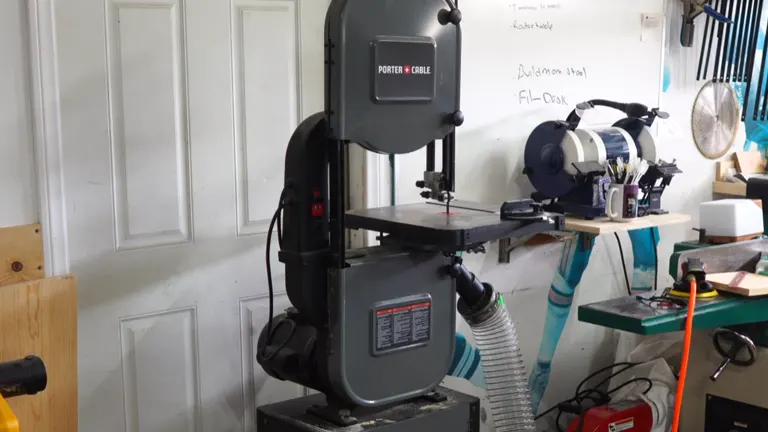
The Porter Cable 14-inch bandsaw stands out with its robust build, featuring a 10-amp, two-speed, 1.5 horsepower induction motor. As a significant piece of equipment, it weighs in at 191 pounds and stands approximately 67 inches tall. The machine boasts a 16 by 16-inch cast iron table, offering a generous and sturdy work surface ideal for handling larger projects.
What’s in the Box?
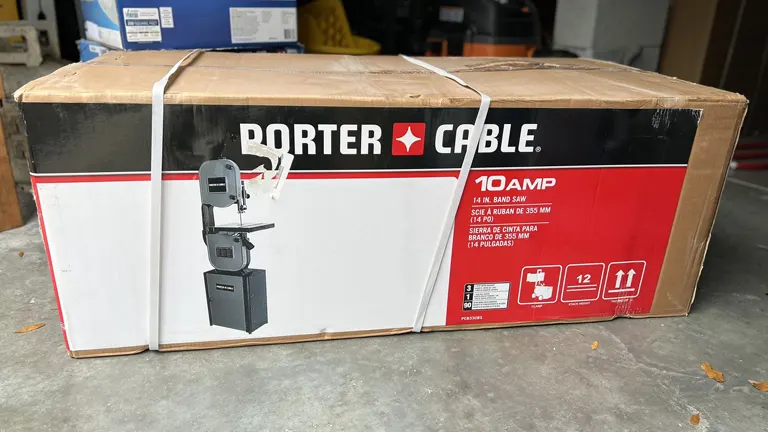
Unpacking the bandsaw, you’ll find the main unit, a stand, and a 2.5-inch diameter dust collection port, along with an initial blade to get you started. Although the assembly process is straightforward, the weight of the bandsaw makes it a task where an extra pair of hands can be beneficial.
Performance
Cutting Capability

The Porter Cable 14-inch bandsaw is equipped to handle demanding woodworking projects with ease. It features a 6-inch depth of cut and a 13.62-inch throat capacity, making it versatile enough for a variety of materials. The machine offers two speed settings—1,630 FPM for more delicate cuts and 2,730 FPM for quicker, rougher cuts. This dual-speed functionality allows you to adjust according to the material’s hardness and your project’s precision needs, ensuring efficient and effective cutting.
Stability and Build
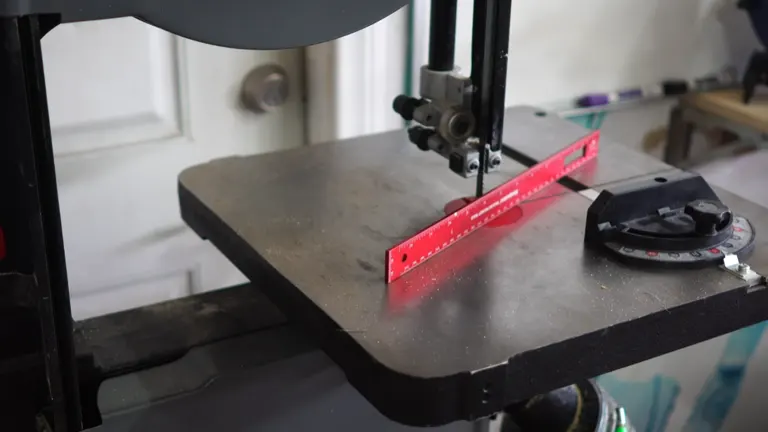
The bandsaw’s design includes a large, sturdy stand that not only provides excellent stability during operation but also offers additional storage space for extra blades and accessories. While these accessories are not included with the initial purchase, the space is valuable for keeping everything organized and within reach. The table itself tilts to the right, allowing for bevel cuts ranging from 0 to 45 degrees. It is also T-slotted, which facilitates the addition of a miter gauge for enhanced precision in cross-cutting, though it’s important to note that the miter gauge is not included with the bandsaw and must be purchased separately.
Pros of the Porter Cable 14″ Bandsaw
- Right off the bat, I noticed the sheer power of this bandsaw. It handles large wood pieces without a hitch, thanks to its 1.5 horsepower motor. It’s quite satisfying to see it cut through both soft and hard woods with equal ease, without bogging down.
- The build quality really stands out. The entire structure, from the frame to the table, is crafted from cast iron. This not only adds to the bandsaw’s lifespan but also keeps it stable and vibration-free while cutting, which is critical for achieving clean, precise cuts.
- The large cabinet stand under the saw is a huge plus for me. It doesn’t come with extra blades or accessories, but the space is perfect for storing whatever extras I have. This feature helps in keeping my workspace organized and clutter-free, which I appreciate.
Cons of the Porter Cable 14″ Bandsaw
- This was a bit of a letdown. The miter gauge isn’t standard, and that complicates things when you need precise angle cuts. I found myself looking into aftermarket options to get the precision I need for more detailed projects.
- The included blade was a disappointment as it dulled quicker than expected. I recommend anyone buying this bandsaw to plan for an immediate blade upgrade. A better-quality blade makes a big difference and extends the time between replacements.
- I did notice some minor cupping on the cast iron table. It’s not a deal-breaker, but definitely something to be aware of. I checked it during assembly, and while it was manageable, it’s something that could affect precision for projects that require high accuracy.
Blade Selection
- Choose a blade based on the material you plan to cut. For wood, use a blade with fewer teeth per inch (TPI) for rough cuts and more TPI for fine, detailed cuts. For metals, always opt for a higher TPI blade.
- Use wider blades for straight cuts as they offer better stability and narrower blades for curved cuts which allow for tighter radii.
- Having a variety of blades on hand will allow you to switch based on the project needs without compromising on the quality of the cut.
Maintenance Tips
- Sawdust can accumulate in your bandsaw’s nooks and crannies, leading to potential operational issues. Clean the machine thoroughly after each use, ensuring that all sawdust is removed from the table, the blade guides, and the wheels.
- Periodically lubricate the blade guides and pivot points to ensure smooth operation. Use only the lubricant recommended by the manufacturer to avoid any potential damage.
- Check the blade tension and alignment regularly. A properly tensioned blade ensures accurate cuts and reduces wear on the blade. Refer to your bandsaw’s manual for the correct method to adjust the blade tension and alignment.
- Regularly inspect the blade for signs of dulling or damage. Replace blades that show signs of wear or have broken teeth to maintain cutting efficiency and safety.
Cutting Techniques
- Adjust the feed rate according to the thickness and hardness of the material. Feeding the material too quickly can lead to rough cuts and can damage the blade while feeding too slowly can burn the material and cause unnecessary wear on the motor.
- When making tight curves, it’s helpful to make relief cuts first. These are straight cuts that remove material from the waste side of the workpiece, reducing the stress on the blade and preventing binding.
- Always ensure that the workpiece is well-supported on the table, especially when working with larger or heavier materials. This not only helps in achieving more accurate cuts but also enhances safety.
- For straight cuts, use the fence to guide the workpiece. For making angled cuts, a miter gauge is invaluable. Although the standard miter gauge with this model may not meet all needs, consider investing in a high-quality aftermarket gauge if precision is critical.
Final Verdict
Despite a few cons, this bandsaw is a solid choice, particularly for those needing extra cutting capacity and robust build quality. The powerful motor and the expansive work area make it a valuable addition to any serious woodworker’s arsenal. Just remember to check the flatness of the table and consider upgrading the miter gauge and the blade for the best experience.
Whether you’re a hobbyist or a professional, the Porter Cable 14-inch bandsaw provides good value, backed by a three-year limited warranty, ensuring you get a reliable performance for years to come.
FAQs
- Can I use this bandsaw for metal cutting?
Yes, with the correct blade and setting it to the lower speed, this bandsaw can handle metal cutting. However, it’s important to use a blade suitable for metal and proceed with caution to ensure safety and the longevity of your machine. - What is the advantage of having two-speed settings on this bandsaw?
The two-speed settings offer flexibility for cutting different materials. The lower speed is ideal for cutting harder or more brittle materials like metal, reducing the risk of damaging the material or the blade. The higher speed is perfect for quicker cuts in softer materials like wood. - How do I maintain optimal performance with my Porter Cable 14″ Bandsaw?
Regular maintenance such as cleaning the machine of sawdust after each use, checking and adjusting blade tension, and ensuring the blades are sharp and properly aligned will help maintain optimal performance. It’s also recommended to lubricate moving parts periodically as per the manufacturer’s instructions. - Is there a solution to the non-standard miter gauge?
While the bandsaw comes with a non-standard miter gauge, many users opt to purchase an aftermarket miter gauge that fits better and offers more precise adjustments. This is a common practice for those needing high precision in their cuts. - What should I do if the table shows signs of cupping?
If the cast iron table is cupped, it is advisable to check it with a reliable straight edge before assembly. Minor cupping can often be managed, but if it’s severe, contacting customer service for a replacement or further guidance is recommended. - Can the saw be upgraded with a riser block for increased cutting height?
Yes, a riser block can be added to increase the saw’s cutting height, which is particularly useful for resawing larger pieces of wood. Make sure to verify compatibility and installation procedures to ensure proper operation. - How do I choose the right blade for my woodworking projects?
Blade selection depends on the type of cut and material. For general woodworking, blades with fewer teeth per inch (TPI) are better for rough cuts, while higher TPI blades are ideal for fine, detailed cuts. Consider the wood’s hardness and the intricacy of the intended cuts when selecting a blade.
I hope you found this review helpful as you consider adding the Porter Cable 14″ Bandsaw to your workshop. If you have any questions, experiences, or tips of your own regarding this bandsaw, please share them in the comments below. It’s always great to learn from each other and enhance our crafting journeys. Don’t hesitate to share this review with fellow woodworking enthusiasts in your circle. Happy woodworking!

David Murray
Forestry AuthorI'm David Murry, a forestry equipment specialist with a focus on chainsaw operation. With over 13 years of experience, I've honed my skills in operating and maintaining a wide range of machinery, from chainsaws to log splitters. My passion for the outdoors and commitment to sustainable forestry drive my work, which emphasizes safety, efficiency, and staying updated with industry advancements. Additionally, I'm dedicated to sharing my expertise and promoting environmental awareness within the forestry community.

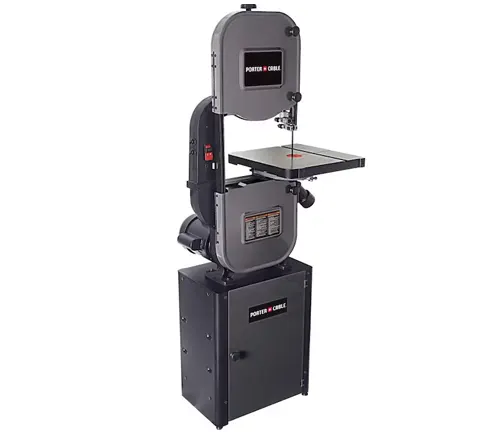

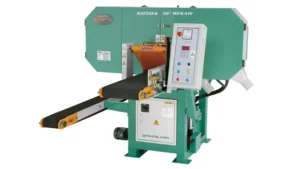

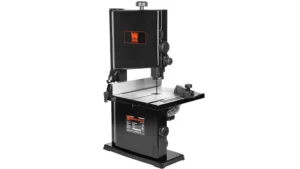
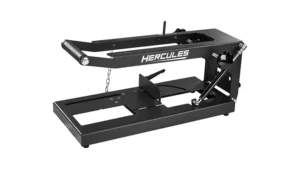
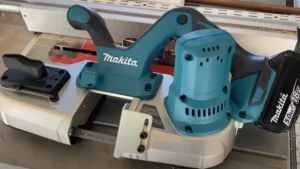
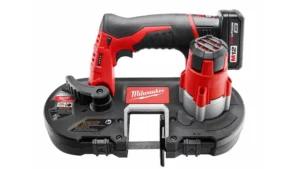
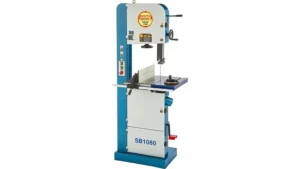
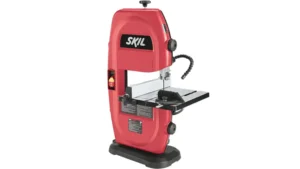
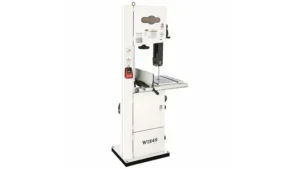
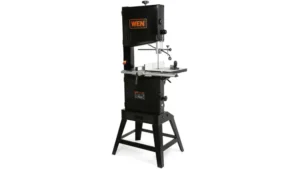
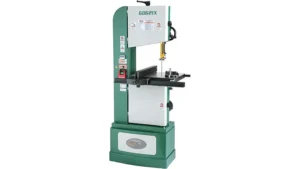
Leave your comment